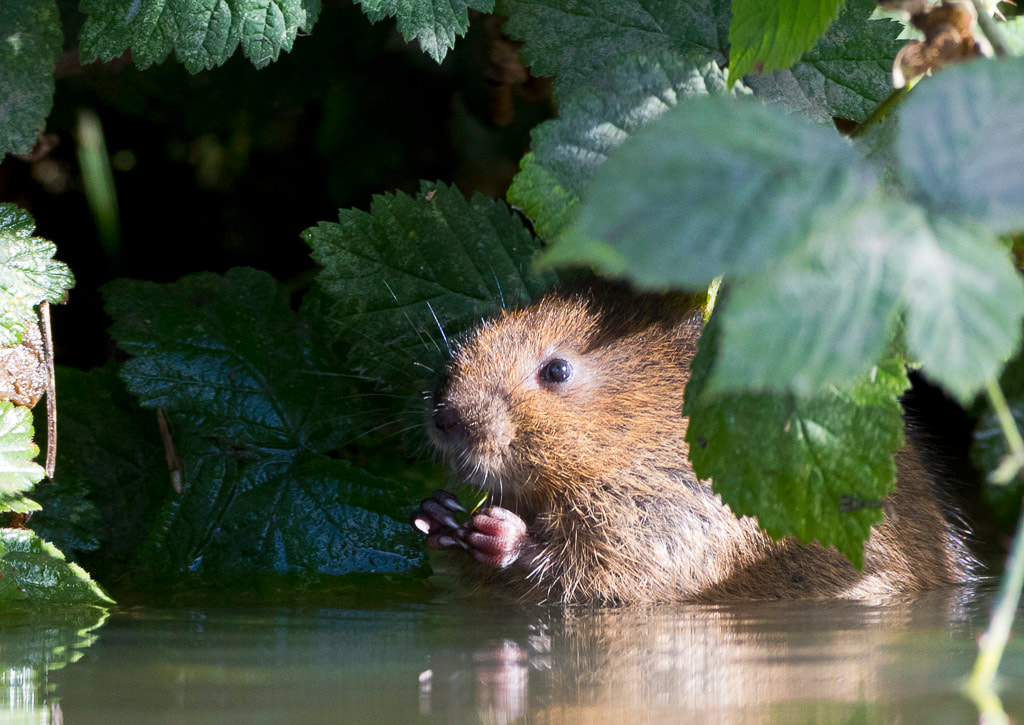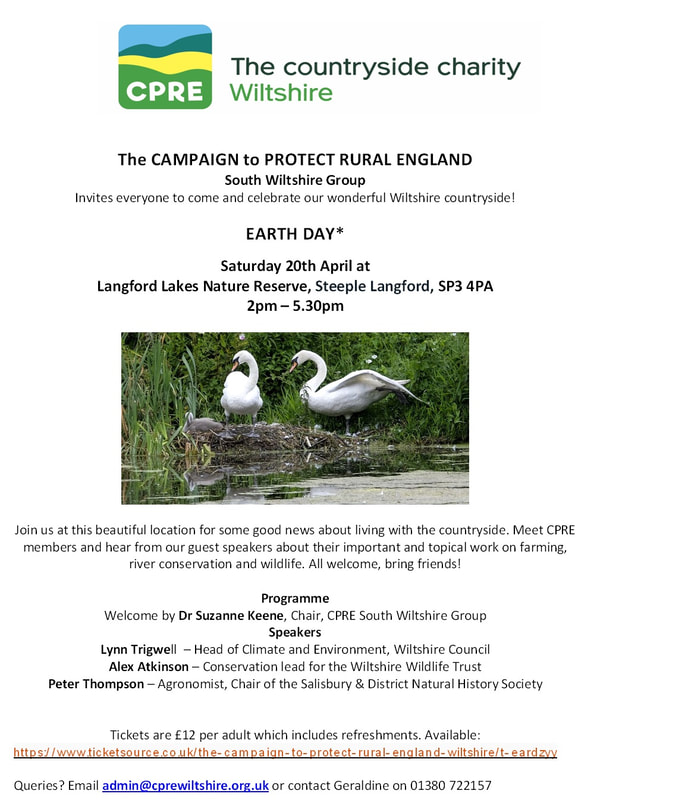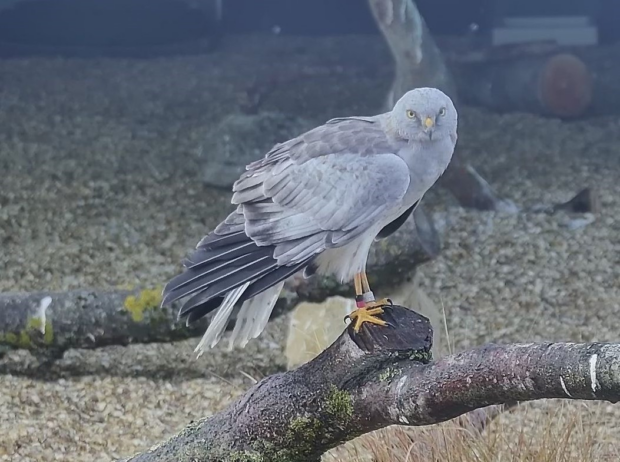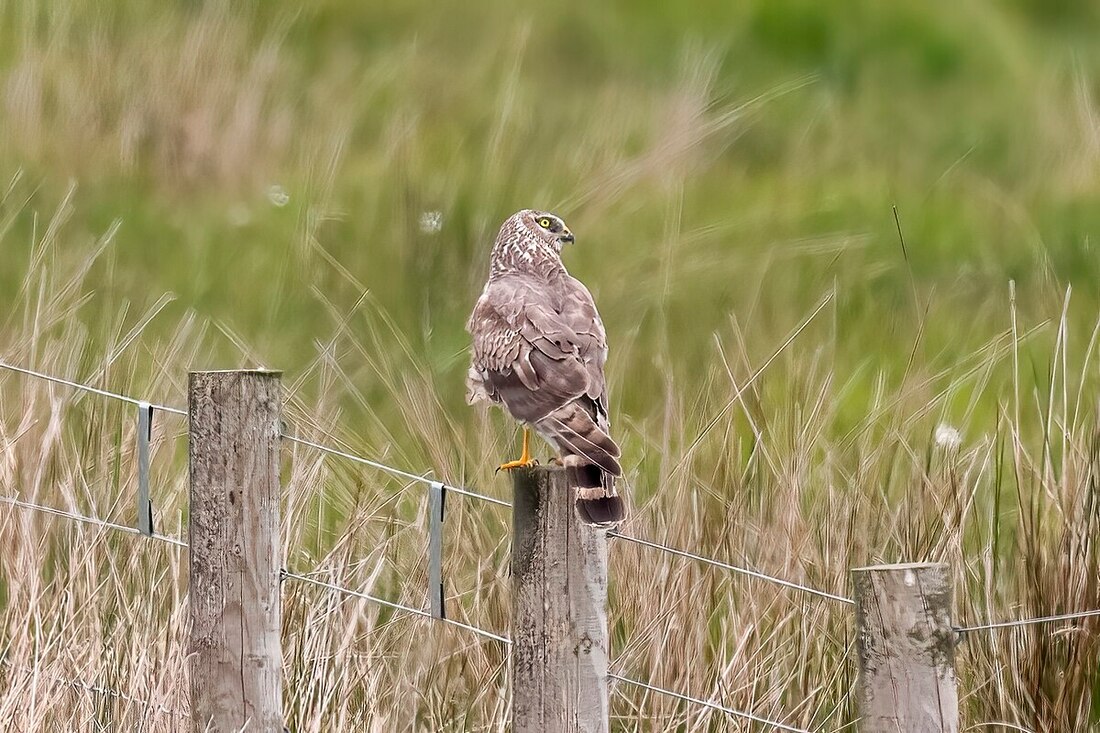|
Please can we have some helpers at the Community Field (below the Skate Park, Tisbury) next week for a 6pm start. You will need to bring some gardening gloves and if you have a gardening fork that makes it easier. We have found that ragwort numbers have diminished with the regular pulling over recent years, so it shouldn't take long. This is in preparation for the hay cut and removing ragwort is necessary due to its toxicity to animals.
On Saturday 6th July, we have a visit to Wild Woodbury, Bere Regis, with a walk of approximately 4km/2.5 miles across uneven ground around this rewilding community project guided by Dorset Wildlife Trust Ranger, Seb Haggett. There is a portaloo on site at the car park.
If you are used to walking poles it will be worth bringing them. Walking shoes/boots are advised and please bring a packed lunch and refreshments. The weather is looking good for Saturday, with dry, sunny spells forecast. There are ticks on site, along with longer vegetation, so trousers are recommended. Also bring along any wildlife spotting equipment, binoculars, cameras etc. Please let us know if you are planning to join the trip and where you will meet us. No dogs. Meet at the Nadder Centre car park at 9:30am or at 10:30am up a short track off Southbrook Road, opposite Eldon Road in Bere Regis. https://maps.app.goo.gl/qXbC482vgk4pZ6Qt6 What3words: permanent.kings.chef Those of you that came along to our meeting in January will recall the fascinating presentation by Rob Farrington of the work he has been leading for the past two and a half years to re-wild the 170-hectare site, south-east of Bere Regis. The plot acquired by Dorset Wildlife Trust was In September 2021 with plans to return what was previously intensively farmed arable land to its natural state. The goal was to create an example of sustainable land use, contribute to tackling the climate and ecological crises, reduce high nitrate levels in the area (and prevent them from entering Poole Harbour), and to engage the local community. In the first year of the project, the land was allowed to naturally regenerate: there was an immediate increase in biodiversity and abundance, with the site list reaching 1300 species. During 2023, the second year of the project, work was carried out to ‘re-naturalise’ the headwaters of the River Sherford that run through the site. More information: https://www.dorsetwildlifetrust.org.uk/blog/tag/wild-woodbury Anticipated end time: Returning to Tisbury by 3:30pm On Saturday 8th June we have planned a field trip to Ham Wall RSPB Nature Reserve near Glastonbury with Andrew Graham and Debbie Carter as your guides. The focus will be on birds but there should be many other wildlife to see. Bring binoculars if you have them. No dogs.
Please let us know by Thurs 6th June evening whether you plan to go on this trip and whether you will car share from the Nadder Centre or meet us at the Reserve because we need to know numbers in advance. Without this information there is risk that this field trip could get cancelled. We do require a booking for each field trip in our programme. Meet at the Nadder Centre car park for a departure at 9.30am or at the Ham Wall Nature Reserve BA6 9SX for 10:30-45am. The car park is at OS ST44893959. What3words biggest.sharpened.clots https://www.rspb.org.uk/days-out/reserves/ham-wall/location Anticipated end time: Departing Ham Wall at 3:00pm to arrive back at the Nadder Centre by 4:15pm. Distance, Difficulty and Footwear: Approximately 5 km/3 miles on flat gravel paths which may be a bit muddy if there has been recent rain. Good stout shoes should suffice rather than wellingtons. Climbing steps may be necessary to enter hides. Bring a packed lunch and refreshments. This Saturday CPRE are celebrating Earth Day with three interesting talks in the beautiful surroundings of Langford Lakes. Earth Day talks
Lynn Trigwell Lynn is a Landscape Architect who has worked in both the private and public sectors. Since 2018 she’s been Head of Climate and Environment for Wiltshire Council. She oversees a wide range to services delivered by the Council in partnership with local communities and local interest groups, landowners and managers, statutory bodies and 3rd sector organisations such as Wiltshire Wildlife Trust and the RSPB. These areas include Archaeology, Landscape, Urban Design and Ecology and in February this year Climate was added. Lynn will be speaking about some of the activities that her teams are working on and share some of the exciting new pilot work they are supporting on the council’s own landholdings. Balancing the challenges and opportunities for our natural environment in Wiltshire. Alex Atkinson Alex oversees the management the Wiltshire Wildlife Trusts 20 southern reserves, including lowland bog, ancient woodland and everything on the successional scale between the two. Restoring natural processes - practical examples for a managed landscape. Peter Thompson Peter Thompson originally trained as an agronomist, advising farmers for 10 years. He then went on to work for the Game & Wildlife Conservation Trust, as their Farmland Ecology adviser, giving guidance to land managers across UK farms. He covers a wide range topics on countryside issues in the talks he gives and leads many training events related to the management of habitats and the wildlife that lives there. He ran the pilot scheme looking into the potential of “Farmer Clusters” for Natural England – which of course has now been widely adopted across the UK. Now “retired”, amongst many other activities, Peter is Chair of the Salisbury & District Natural History Society. The countryside’s future – my shot at seeing the wood through the trees The People’s Trust for Endangered Species (PTES) is running a pilot programme to monitor hedgehog populations (NHMP). For this programme, a large number of cameras are deployed at specific sites across the country at specific dates, with 5 sites having been selected in Wiltshire this spring/summer. Volunteers are needed to help deploy the trail cameras at the site and check the images obtained. The Tisbury and District Natural History Society has its own independent trail camera project (more info here) but we would like to assist two neighbouring areas with their participation in the PTES pilot project.
If you would like to take part in the camera deployment aspect, take note of the dates and get in touch with us so we can coordinate our participation with the organisers of the sites. Broadchalke Deployment day Thursday 4th April Collection day Saturday 4th May Barford St Martin Deployment day Saturday 20th July /Sunday 21st July (TBC) Collection day Monday 19th August/ Tuesday 20th August (TBC) If you would like to help with image checking (identifying animals in the pictures taken by the trail cameras), please follow these instructions: 1. Register in the portal MammalWeb first. 2. Following registration in MammalWeb, please fill in this PTES form, using the same email address that your MammalWeb account is linked to. This will register you as a PTES NHMP volunteer, and you will receive instructions on how to take part. For image checking, you don’t need to wait until the camera season is over, as there are already images from 12 previous sites across the country. Inés López-Dóriga (c) Natural England (male hen harrier)
The talk last week given by Flemming Ulf-Hansen and Sofia Muñoz from Natural England was illustrated with photographs and videos from their project headquarters near Salisbury Plain where their captive hen harriers from France have spent a year acclimatising to their new location, surrounded by species rich grassland. The deliberately low maintenance management of the land on Salisbury Plain makes this location ideal for hen harriers as it is richly populated with voles and farmland birds like corn buntings, linnets, pipits and skylarks, which are the mainstay of their diet. Hen harriers nest on the ground, preferring deep heather on moors or tucked down amongst high arable crops. It is thought that 50-60% of the young die in any year as they are vulnerable to predators such as foxes, badgers and stoats. Early harvesting in arable fields also brings danger if the nests remain undetected. The captive hen harriers in France and Spain have typically been rescued as fledglings from abandoned nests. Male hen harriers are polygynous so they may need to supply several females with food, which adds another precariousness to their young’s chances of reaching adulthood. With 5-10 journeys to each nest per day, bringing food in the first 15 days, a male hen harrier has the sole responsibility for nourishing the chicks before the female begins hunting for supplementary food. With no parental lessons in hunting given, the juveniles have to adapt fast to survive when the time comes to leave the nest. Since hen harriers like to return to their natal area, it is hoped that any juveniles born this year will provide the breeding stock for the future. For further information about this interesting breeding project and Natural England’s outreach work with gamekeepers and the farming community, please go to their Project blog.  Water vole (c) Steve Deeley The Wiltshire Mammal Group have sent us information about an event showcasing the projects in Wiltshire for controlling American mink, as part of a wider Water vole recovery strategy. The event is being held at the Wiltshire Scout Centre, Potterne Wick, Devizes on Wednesday 27th March. Doors open at 18:15 hrs for refreshments and 18:45 - 21:00 is the timing for the presentations. Professor Tony Martin of the Waterlife Recovery Trust will be their keynote speaker, sharing his experiences and successes. This will be followed by a series of rapid-fire presentations from projects within Wiltshire, providing a platform and route for potential volunteers to get involved, and for projects to learn from each other. Full details about reserving a free ticket can be found here  You can listen to the interview Debbie and Andrew Carter gave on TisTalk episode 4 for 2024, about the Lifetime Achievement Award they received from Wiltshire Wildlife Trust in December. Tune in at https://www.buzzsprout.com/1992504/14441760 We are running another hedgelaying session at the Community Field (below the Nadder Centre and Skatepark) on Sat 10th Feb starting at 9:30am and finishing at 11:30am. We shall be providing tools and guidance. Just bring a pair of tough gardening gloves and weather appropriate clothing! No prior experience necessary. We'd love your help...
(c) Caroline Legg On Thursday 8th February, we start our evening earlier with the AGM at 7.00pm. Doors and the bar open at 6:30pm. We hope that all our members will be able to attend the AGM.
Sofia Muñoz and Flemming Ulf-Hansen from Natural England (see below) will start their talk on the Hen Harrier Southern Reintroduction Project at 7:30pm. They will share updates about the conservation breeding programme for hen harriers and how the project team are working with local farmers, landowners, game keepers and conservation groups to alleviate concerns about hen harrier recovery in the region. Having disappeared from the mainland as a breeding species by the late 19th century, hen harriers recolonised naturally in the uplands from the northern isles, but continuing illegal persecution of these birds of prey has hampered recolonisation in the south. In August 2022, ten captive hen harriers from a rescue centre in France were transported to the UK and they have spent the last 17 months settling into their new home and adapting to each other. It is hoped that in 2024 these hen harriers will breed and their progeny will be released wild into the arable landscape of Wiltshire. If you'd like to read up about their project in advance, please see the Project's blog Flemming Ulf-Hansen, Lead Adviser Salisbury Plain and Hen Harrier Southern Reintroduction at Natural England [B.Tech. Environmental Science, MSc Plant Science, PhD Ecology] Sofia Munoz, Senior Adviser Hen Harrier Southern Reintroduction Complex Case Unit [BSc (Hons.) Biology, specialization Zoology, MSc Biology Conservation] |
Photo: Avocets (Izzy Fry)
The headers display photos taken by our members. Do get in touch via the Contact Form if you'd like to submit a photo for selection.
Archives
May 2024
Categories
All
|






 RSS Feed
RSS Feed